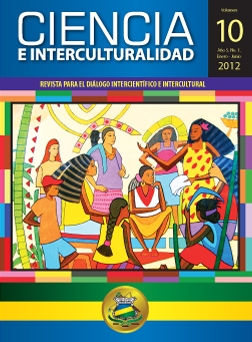INFLUENCIA DE LAS FASES LUNARES SOBRE EL RENDIMIENTO DEL MAÍZ (Zea mays variedad NB6)
DOI:
https://doi.org/10.5377/rci.v10i1.819Keywords:
conocimiento tradicional, influencia lunar, rendimiento, maízAbstract
La observación de las fases lunares para realizar actividades agrícolas, es una costumbre de muchas culturas alrededor del mundo. Sin embargo, existen pocos estudios científicos relacionados con este tema. El objeto de esta investigación fue determinar la influencia de las fases lunares sobre el rendimiento del maíz. Para ello se consultó a 45 productores de 19 comunidades de la Región Autónoma Atlántico Sur (RAAS), sobre el uso de las fases lunares para la siembra. Además, se estableció un experimento utilizando un diseño de bloques completamente al azar con cuatro repeticiones por cada fase lunar (16 parcelas en total). Se midió el porcentaje de germinación, el crecimiento y rendimiento del cultivo. Los datos fueron analizados utilizando el programa InfoStat versión 2010. Los resultados reflejan que la germinación de las semillas presentó diferencias estadísticas significativas, siendo mayores en parcelas sembradas en las fases de cuarto creciente y luna nueva. La variable altura, largo y peso de mazorca, no presentaron diferencias significativas según fase lunar. En la variable diámetro del tallo se encontró diferencia significativa; las plantas sembradas en luna nueva presentaron el mayor diámetro. El daño causado por enfermedades y herbívoros presentó un resultado variable para las cuatro fases lunares. El peso promedio del maíz sembrado en la fase de luna nueva fue mayor que en las otras fases, contrario a la creencia popular de los productores de la región.
SUMMARY
Observation of the moon phases for agricultural activities is a custom in many cultures around the world. However, there are few scientific studies related to this topic. The purpose of this research was to determine the influence of moon phases on corn yields. In order to achieve this goal, 45 producers were consulted from 19 communities in the South Atlantic Autonomous Region (RAAS), regarding the use of the moon phases for sowing. Besides, an experiment was made using a block design completely at random using four replicates for each moon phase (16 plots in total). We measured the percentage of germination, the growth and yield of the crop. Data were analyzed using InfoStat 2010 version. The results show that the seed germination presented significant statistical differences, being higher in plots planted in the first quarter and new moon phases. The variables such as height, length and cob weight, showed no significant differences according to the moon phase. Regarding the stem diameter, significant differences were found, in which the plants sowed on new moon had the biggest diameter. The damage caused by diseases and herbivores presented an outcome variable for the four moon phases. The average weight of corn sowed in the new moon phase was higher than in the other phases, contrary to the producer’s popular belief in the region.
Downloads
6810
HTML (Español (España)) 62642
EPUB (Español (España)) 192
Resumen (Audio) (Español (España)) 174
Abstract (Audio) 165
Downloads
Published
How to Cite
Issue
Section
License
Copyright © (URACCAN)

This journal is licensed under a Creative Commons Attribution-NonCommercial-NoDerivatives 4.0 International License.
This license allows others to download the works and share them with others, as long as their authorship is acknowledged, but they can not be changed in any way nor can they be used commercially.




